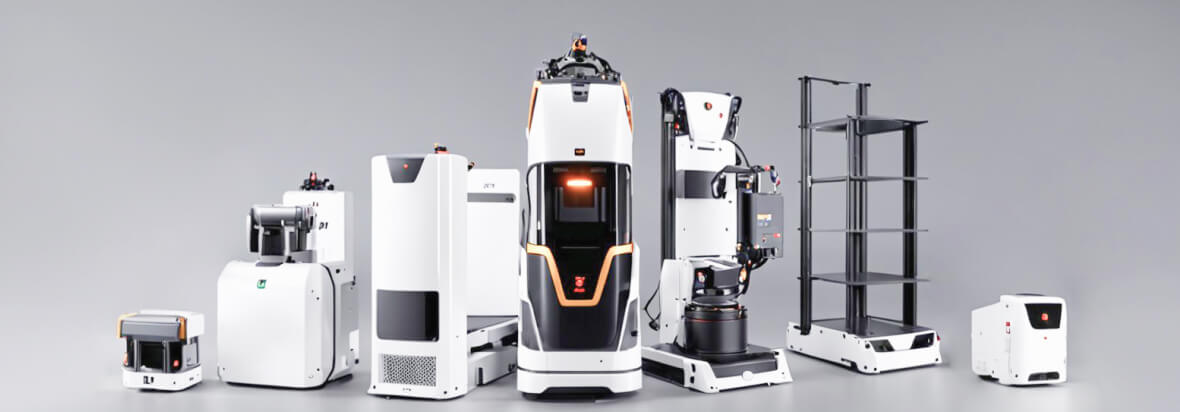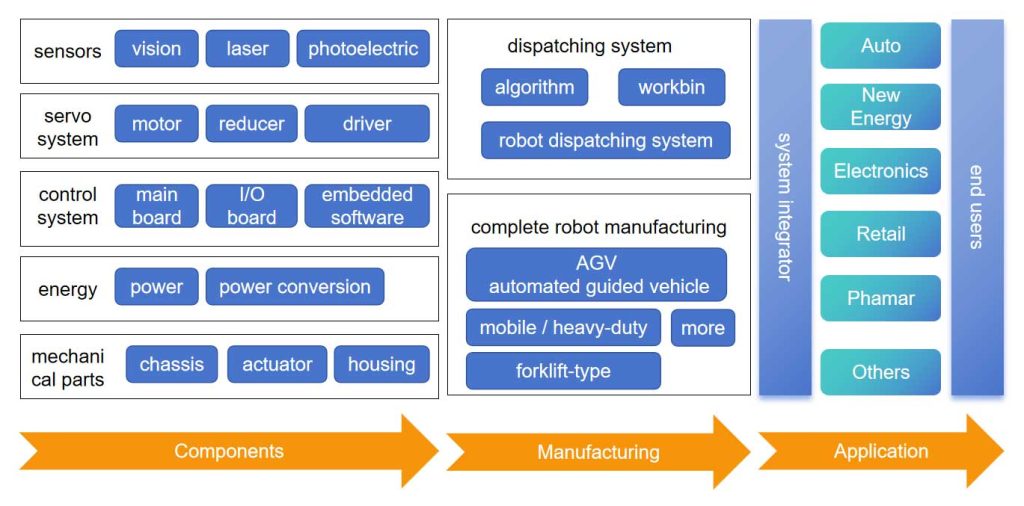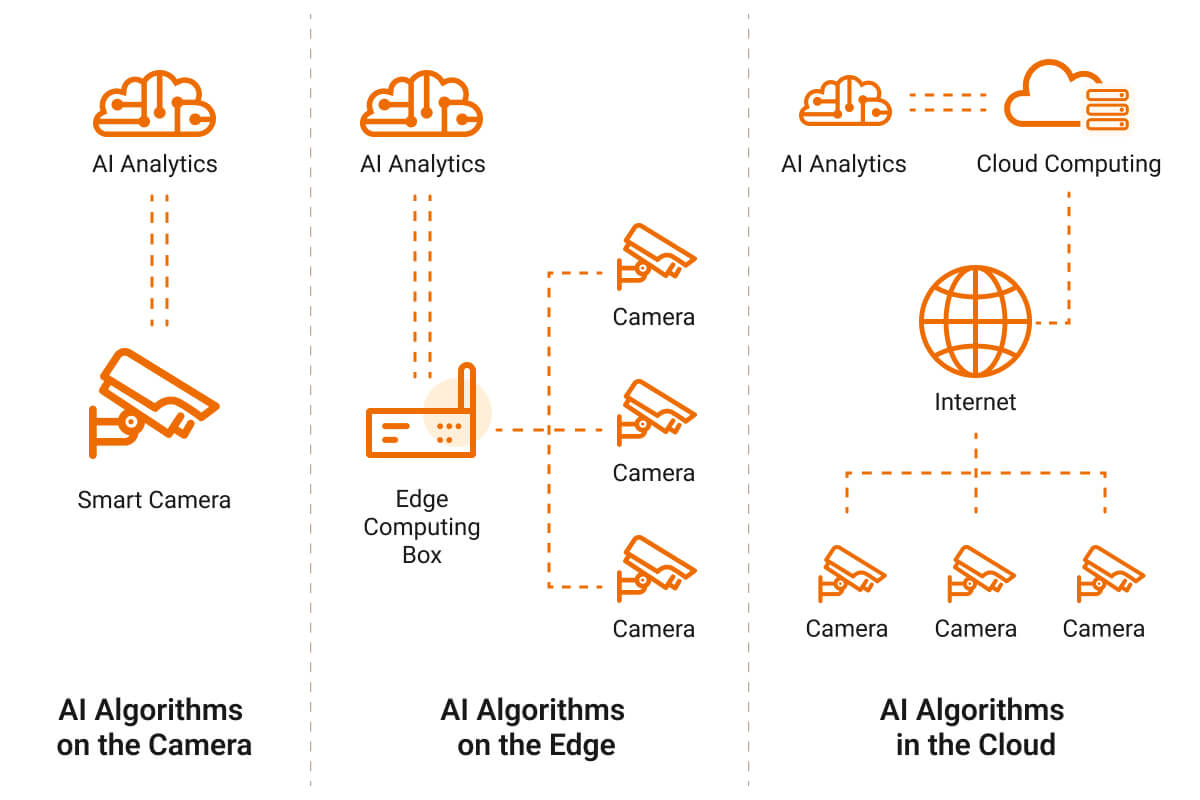What Are ARM and AGV Robots?
Automated Guided Vehicles (AGVs) and Autonomous Mobile Robots (AMRs) represent a significant leap forward in the realm of industrial and logistics operations. These mobile robots are equipped with sophisticated navigation systems and are controlled by onboard control systems, featuring characteristics such as wheeled mobility and integrated power or power conversion devices. In recent years, there has been a growing interest in tracked and legged mobile robots, expanding the diversity of technology in the field.

Mobile robots are generally divided into two main components: the system software and the hardware. The software is responsible for task coordination and path control within specific operational contexts. Meanwhile, the hardware comprises motion control modules, sensors, battery modules, and more.
Driven by technological advancements and industrial revolutions, the mobile robotics industry has experienced rapid growth. According to GGII statistics, the global mobile robotics market size was approximately 28.5 billion RMB in 2022, with a growth rate exceeding 30%. Projections indicate that by 2026, the market size will surpass 100 billion RMB.
ARM vs AGV
When it comes to classifying mobile robots, navigation methods and application functions are key differentiators. In terms of navigation, Automated Guided Vehicles (AGVs) typically rely on track-based systems such as magnetic tape or QR code navigation, making them popular in warehouse environments for e-commerce, footwear, and retail industries. On the other hand, Autonomous Mobile Robots (AMRs) utilize trackless navigation technologies, such as laser and vision-based systems, which are prevalent in industrial settings. The industry is evolving from single magnetic navigation to a combination of QR code, laser, vision, and hybrid navigations.
Functionally, mobile robots can be categorized into various applications such as transport, assembly, towing, inspection, sorting, and compound operations.
Although AGVs have been around longer, AMRs are rapidly gaining market share due to their distinct advantages. Unlike AGVs, which typically follow pre-set routes and instructions, AMRs are capable of intelligent perception, autonomous path planning, and dynamic obstacle avoidance. They can safely collaborate with humans and adapt to changes in their environment, making them more intelligent, flexible, safe, and efficient. As a result, the leading players in the mobile robotics market are increasingly shifting their focus from AGVs to AMRs.
| AGV | AMR | |
| Path Planning | Utilizes fixed paths constrained by ground guidance lines. The destination is reached through the combination of different guidance lines. | Employs dynamic, map-based path planning, offering more flexibility. AMRs can achieve efficient multi-robot coordination by integrating obstacle avoidance capabilities. |
| Deployment | Generally involves laying down magnetic guiding strips, a relatively straightforward process. | Operates using SLAM, requiring the robot to map the environment by simply navigating around the operational area twice, which is simpler compared to AGVs. |
| Human-Robot Collaboration | Weak in perception, path planning, and obstacle avoidance, leading to potential safety risks in dynamic and complex human-robot collaborative environments. | Equipped with deep perception, dynamic path planning, and proactive obstacle avoidance capabilities, enabling effective human-robot collaboration. |
| Operational Area | Requires a large operational area, with increased deployment complexity and cost as more guidance lines, reflectors, and markers are needed. | Can operate over any area by creating a map at the software level, ensuring that overall costs do not increase significantly, except for additional enhanced positioning locators as needed. |
| Operational Points | The more operational docking points robots need within the scene, the more complex the landmark traffic routes need to be laid out. | With map-based dynamic path planning, AMRs are more flexible and can coordinate efficiently with multiple robots by incorporating obstacle avoidance. |
| Congestion Risks | High numbers of AGVs can lead to congestion on guidance lines. | With the ability to plan dynamic paths within any feasible area of the map, AMRs can manage real-time traffic control if corridor widths are sufficient, resolving congestion issues and enhancing multi-robot operational efficiency. |
Manufacturing ARM and AGV
The manufacturing process of AMRs and AGVs involves three crucial stages: core components, complete machine manufacturing, and system integration.

Upstream – Core Components
The core components in AMR and AGV manufacturing consist of five main areas:
- Sensors: Including vision, laser, and photoelectric sensors.
- Servo Systems: Comprising motors, reducers, and motor drivers.
- Control Systems: Featuring main controllers and embedded software.
- Energy Power Supplies
- Mechanical Parts
AMRs, with their active navigation capabilities, require more sophisticated sensor setups, particularly vision or laser sensors, and controllers capable of active path planning. In contrast, AGVs primarily use photoelectric sensors with controllers that emphasize passive execution capabilities. These components constitute the majority of the cost in AMR and AGV production and are pivotal in determining the robot’s performance. Notably, the cost of controllers, servo motors, and reducers accounts for about 70% of the total cost of mobile robots.
Midstream – Complete Machine Manufacturing and Scheduling Systems
In the midstream, AMR and AGV manufacturing are divided into two aspects: scheduling systems and complete machine manufacturing.
- Scheduling Systems: Encompassing algorithms and robot scheduling systems.
- Complete Machine Manufacturing
Within the AMR and AGV robotics industry, control systems are installed on individual machines and are responsible for executing motion trajectories. Meanwhile, scheduling systems are part of a comprehensive solution, housing the most complex algorithmic models.
Downstream – AMR and AGV Applications
AMRs and AGVs have permeated a wide range of industries, typically integrated into downstream applications by system integrators. AGVs using QR navigation are primarily found in e-commerce, retail, and pharmaceutical warehouse and distribution settings. In comparison, AMRs utilizing SLAM navigation are prevalent in industrial scenarios. As these products continue to diversify and expand into new areas, mobile robots are poised to replace more manual labor across various applications, offering significant potential for future growth.
Also read: How Does Charding Robot Work?
ARM and AGV Controllers
The controller acts as the core of the control system for AGVs and AMRs, managing the operations of various hardware components. Essentially, it functions like a computer. From a hardware perspective, AGV/AMR controllers are generally classified into three main types:
Programmable Logic Controllers (PLC)
Known for their stability and high reliability, PLCs are strong in logic control, typically suitable for simple motion control and numerical calculations with low development complexity. However, PLCs lack openness, making it difficult to expand software functionalities and hardware modules.
Industrial PCs
Essentially a sturdily designed personal computer, industrial PCs are tailored to withstand harsh industrial environments, including vibration and electromagnetic interference. Compact and small in size, they can run general operating systems such as Windows and Linux.
Microcontrollers
Often developed based on ARM, X86, or similar chips, microcontrollers allow for custom peripheral circuits. While PLCs and industrial PCs can be expensive, microcontrollers are more cost-effective, though they require skilled personnel and entail a higher time and financial investment for embedded development.
As AGV and AMR technologies advance, navigation methods diversify, the trend of incorporating of laser and vision technologies rises, the demand for higher computational power in controllers is significantly increasing. Developing specialized AGV and AMR controllers based on embedded boards is becoming an industry trend.
Developing proprietary AGV and AMR controllers involves focusing on cross-platform compatibility, sensor compatibility, algorithm adaptability, and the stability and precision of motion control algorithms. Specifically, this includes:
- Hardware: operating temperature range, humidity range, IP protection level, explosion-proof, and corrosion resistance certifications.
- Embedded Boards: Requirements for the stability of chips, compilers, operating systems, etc.
- Algorithms: Reliability of AI algorithms after thorough validation across numerous application scenarios.
- System: Fault tolerance and redundancy capabilities to enhance controller reliability.
AI Algorithms within AGV/AMR Mobile Robots
The integration of AI algorithms in AGVs and AMRs enhances their capabilities in navigation and operational efficiency. Key technologies include:
Laser SLAM Technology
Simultaneous Localization and Mapping (SLAM) is a fundamental technology enabling AGV and AMR robots to achieve autonomous navigation and environmental perception. It allows AGVs and AMRs to construct maps of unknown environments in real-time while simultaneously localizing themselves within these maps. Typically, SLAM algorithms work in conjunction with data from sensors like LiDAR and cameras to achieve high-precision environmental modeling and localization.
Path Planning and Visual Navigation Technology
For optimal task performance, AGVs and AMRs must plan the best routes based on task requirements and map information. This involves avoiding obstacles and optimizing travel distance. Path planning algorithms, such as genetic algorithms and A-Star algorithms, facilitate optimal route planning. These algorithms guide the robot to follow predetermined routes, integrating the robot’s dynamic model and sensor data fusion.
Machine Learning Algorithms
AGVs and AMRs leverage machine learning algorithms to make intelligent decisions and control actions based on real-time environmental information and task requirements. By learning from and analyzing historical data, these algorithms enable AGVs and AMRs to make decisions and manage tasks intelligently.
Introducing Dusun IoT’s RK3588/J-based AGV/AMR Motherboard
Dusun IoT offers an advanced AGV/AMR motherboard based on the RK3588J, Rockchip’s flagship AIoT SoC. This powerful motherboard is designed to meet the demanding performance requirements of modern autonomous mobile robots.
- High-Performance CPU: The RK3588J is equipped with an octa-core CPU (4x Cortex-A76 + 4x Cortex-A55), delivering remarkable computing power capable of handling complex tasks and multitasking operations effectively.
- GPU and VPU: Integrated with a Mali-G610 GPU, the motherboard supports high-resolution video playback and graphical processing, offering a smooth user experience suitable for multimedia applications.
- High Computational Power: With a built-in 6 Tops Neural Processing Unit (NPU), the motherboard supports various AI algorithms, providing AI acceleration for tasks such as image recognition and voice processing.
- Efficient Power Consumption and Thermal Management: The RK3588J excels in power consumption and thermal management, making it well-suited for long-term AGV applications. Its low-power design enhances operational duration, while excellent thermal performance ensures system stability and reliability.
- Rich External Interfaces: Featuring support for HDMI 2.1, USB 3.1, and PCIe 3.0 interfaces, it easily connects to cameras, LiDAR, and other sensors.
- Long-Range Data Transmission and Upload: The onboard LoRa module supports private LoRa protocols, ideal for long-distance sensor data retrieval and control in AGV applications. It also supports WiFi 6 and 5G networks (with external modules) to provide fast and stable network connectivity, enhancing the network application experience.
Dusun IoT’s RK3588J-based AGV/AMR motherboard integrates the high-performance Rockchip RK3588/J processor, ample memory resources, and a diversified array of input and output interfaces. It efficiently processes real-time data from various devices such as LiDAR, cameras, and sensors, allowing the embedded motherboard to make informed environmental perceptions and decisions swiftly, ensuring precise navigation and agile obstacle avoidance in complex and dynamic scenarios.
With extensive experience in customizing embedded motherboards for mobile robots, Dusun IoT provides complete support from hardware design and BSP development to software applications and test cases.

Future Trends of ARM and AGV
As the scope of application for AGVs and AMRs continues to broaden, their presence is increasingly felt across diverse industries. From traditional sectors like automotive and tobacco to cutting-edge fields such as 3C electronics, semiconductors, pharmaceuticals, and renewable energy, AMRs and AGVs are being deployed extensively.
However, their current application depth often remains limited to basic transport tasks within these industries. Looking forward, the trend suggests a shift from breadth to depth in applications, with mobile robots expected to cover all processes and scenarios in niche sectors. AMR and AGV robots are poised to evolve beyond mere logistical aids, integrating seamlessly into production processes and serving as pivotal production equipment.
Enhanced Service Capabilities and Response Speed
With the rapid development of the mobile robotics industry and the increasing maturity of products, downstream customers are demanding more from AMR and AGV manufacturers concerning technical service capabilities and response times. As product functionalities continue to advance and industry applications deepen, the scenarios for AMR applications will expand and become more complex. To meet customer needs and respond to unexpected situations in production, AMR manufacturers must develop an integrated service capability that spans product design, improvement, mass production, and after-sales technical support, ensuring swift resolution of emerging issues to build trust and maintain client relationships.
Increasing Trend of Automation Replacing Human Labor
As many countries face an aging population, enterprise labor costs are rising, and the proportion of the workforce within the total population is diminishing. The declining number of working-age individuals, coupled with rising labor wages in manufacturing, has significantly increased labor costs for companies. Consequently, in pursuit of efficiency and cost reduction, the trend of robot substitution for human labor is anticipated to be a long-standing and stable practice.
Continued Growth in Market Demand
The urgent need for intelligent transformation in industrial scenarios, characterized by high technological barriers, high returns on investment, and substantial customer value, offers opportunities for AMR and AGV robots. Deepening industrial applications, large-scale replication, and the derivation of flexible, innovative solutions are driving substantial market demand for AMR and AGV robots.
Integration with Emerging Technologies for Performance Enhancement
AMR technology is increasingly merging with other technological domains like artificial intelligence, IoT, and cloud/edge computing, crafting more intelligent robotic systems. With the assistance of AIoT, AMRs and AGVs can enhance autonomous decision-making and intelligent perception, thereby improving autonomous navigation and obstacle avoidance capabilities. Future integration with emerging technologies promises to further increase the intelligence and versatility of AMR and AGV robots.
Standardization and Customization
The widespread applicability of AMR robots dictates their inherently custom nature, implying that standardized, uniform autonomous mobile robot products cannot blanket such diverse application settings. However, there is potential for standardized, mass-produced products within specific differentiated applications. By thoroughly exploring application needs, it is possible to develop new application models and offer them as standardized solutions to users in particular industries.





















